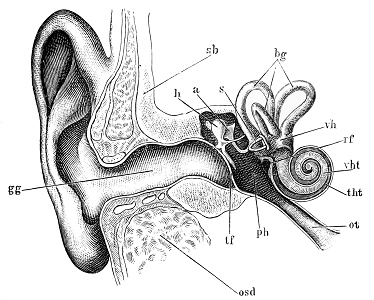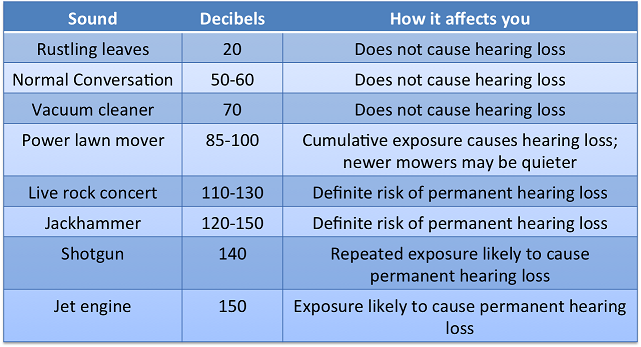 Sound is the result of the vibration of air molecules. The source of any given sound vibrates, causing adjacent air molecules to compress into local regions of increased pressure and rarify in local regions of decreased pressure.¹ Pressure changes travel through air to our ears as a wave.
Sound is the result of the vibration of air molecules. The source of any given sound vibrates, causing adjacent air molecules to compress into local regions of increased pressure and rarify in local regions of decreased pressure.¹ Pressure changes travel through air to our ears as a wave.
The outer ear is composed of the auricle, ear canal and eardrum. The middle ear includes the smallest bones in the body: the ossicles. Sound waves vibrate the eardrum and ossicles. As sound enters the ear it passes through the external auditory canal where it meets the eardrum.¹
The cone shaped eardrum, connected to 3 ossicles (malleus, incus, stapes) vibrates in response to sounds. The movement vibrates the ossicles and passes on the information to the cochlea. The outer and middle ear are filled with air, and the inner ear is filled with water. When sound waves travel from the less dense air to the denser water, it is reflected. The ossicles act as an amplification system to overcome this reflection.¹
 The cochlea contains hair cells with little tufts of hair called cilia. These are appendages of the receptor cell involved in movement of transducing mechanical vibration into neural activity, When the fluid in the cochlea moves, the cilia sway back and forth, depolarizing the hair cell and resulting in an action potential in the auditory nerve going to the brain.¹
The cochlea contains hair cells with little tufts of hair called cilia. These are appendages of the receptor cell involved in movement of transducing mechanical vibration into neural activity, When the fluid in the cochlea moves, the cilia sway back and forth, depolarizing the hair cell and resulting in an action potential in the auditory nerve going to the brain.¹
The physical characteristics of frequency, amplitude and complexity of the pressure changes are interpreted psychologically in the brain as pitch, loudness and timbre respectively.¹
Most hearing loss comes from damage to the cilia. Loud sounds can damage these irreplaceable hairs. Sounds over 85 dB can cause measurable hearing loss. See the attached table for more information and examples.
Reference:
1. Psychology: the Science of Behaviour - Neil R. Carlson.
